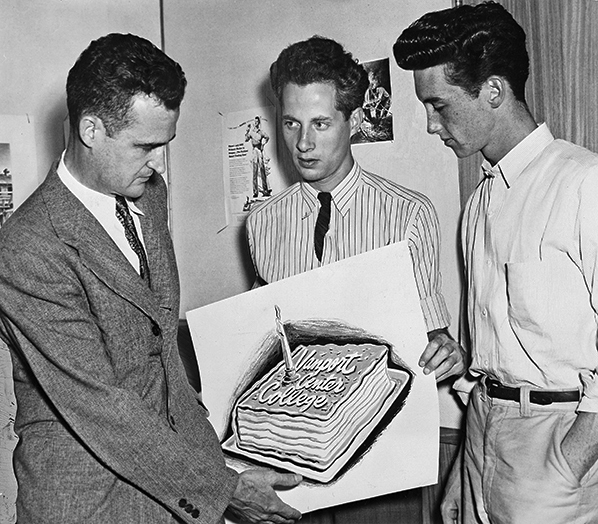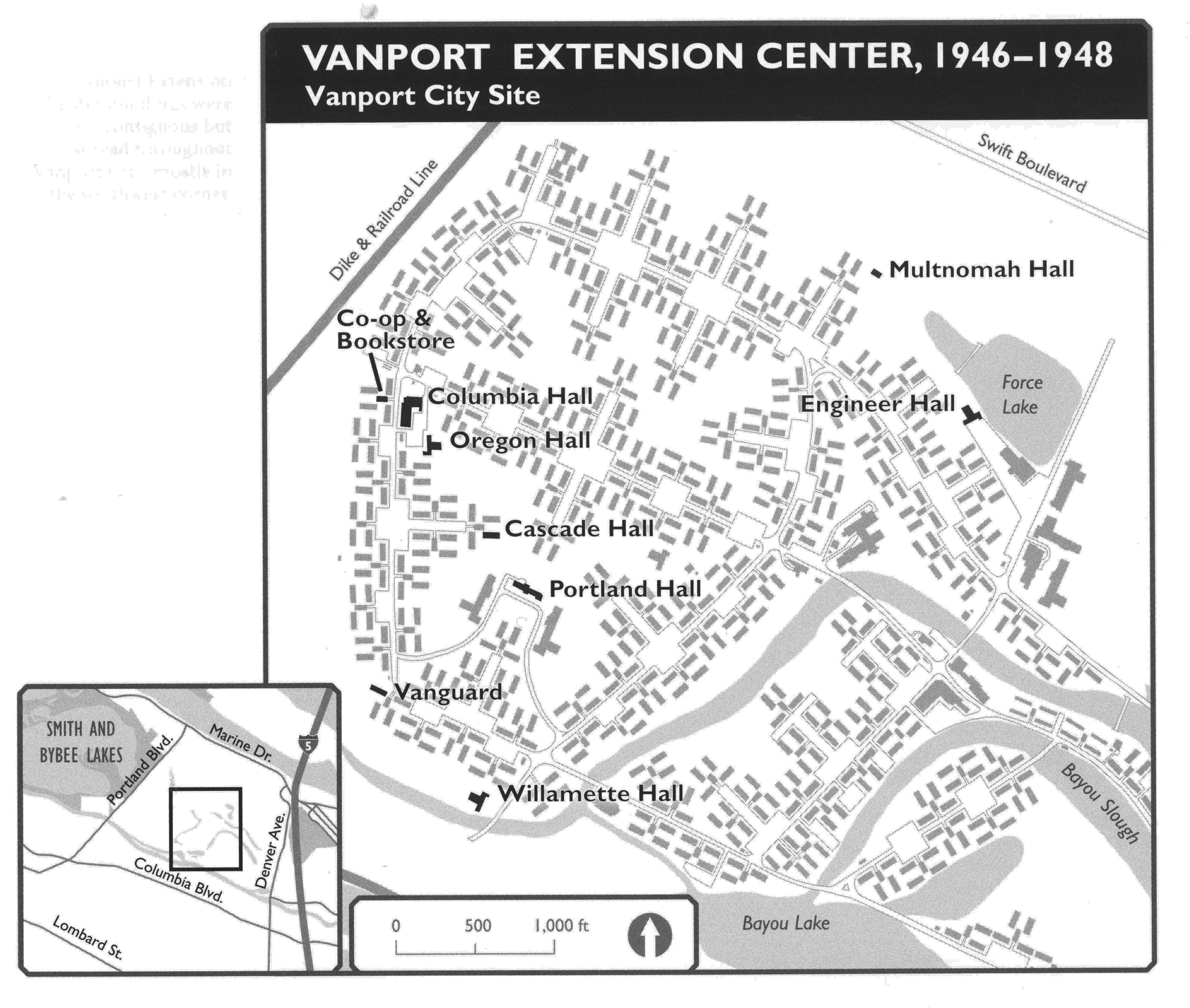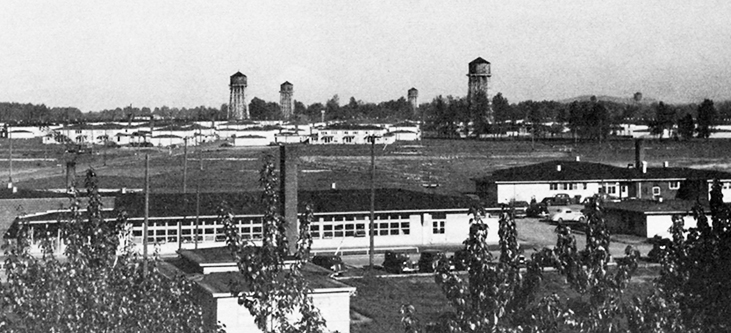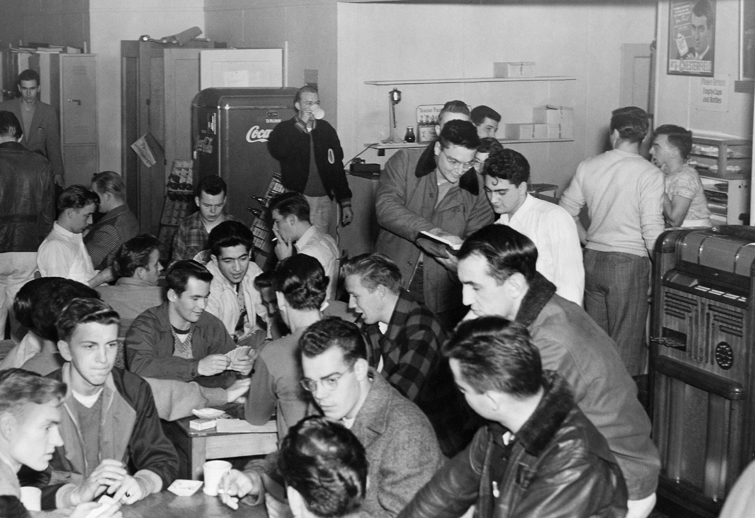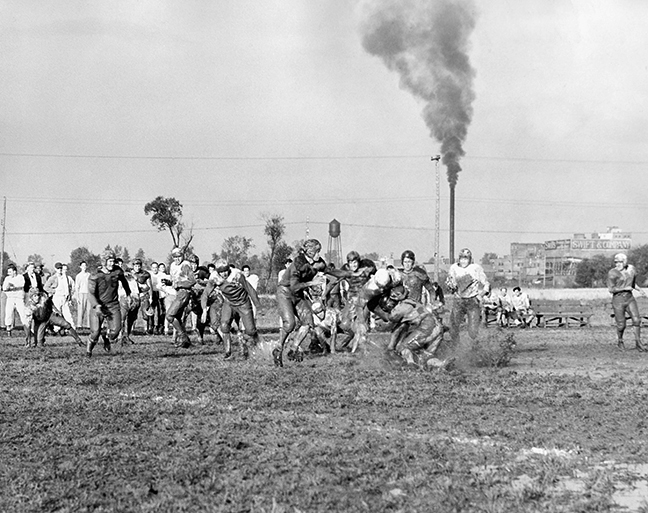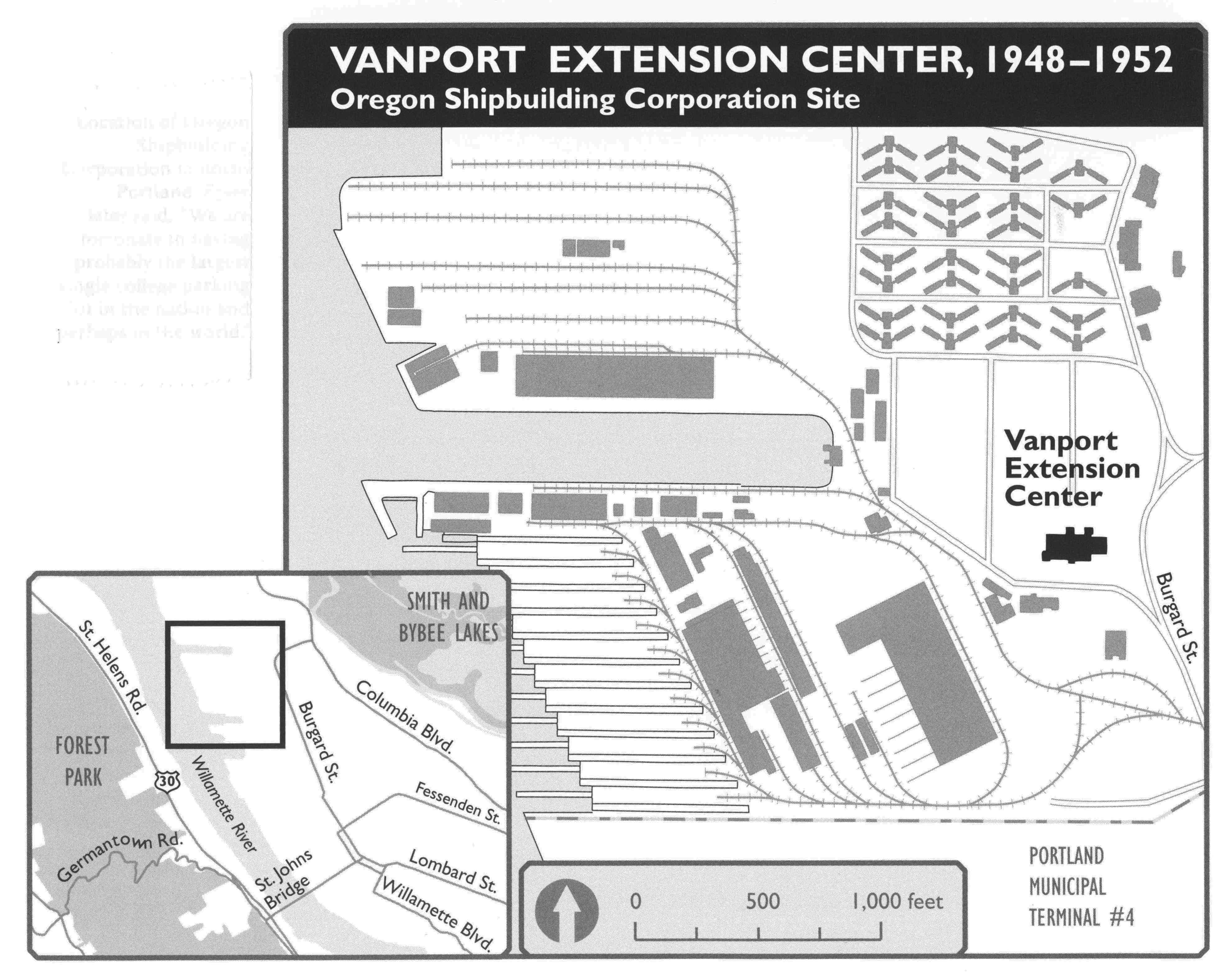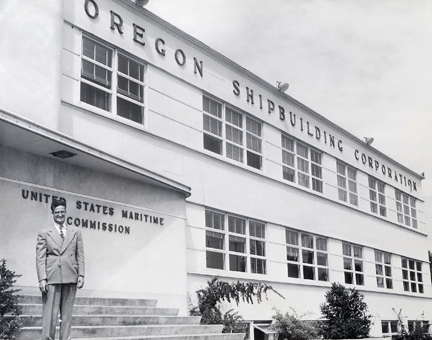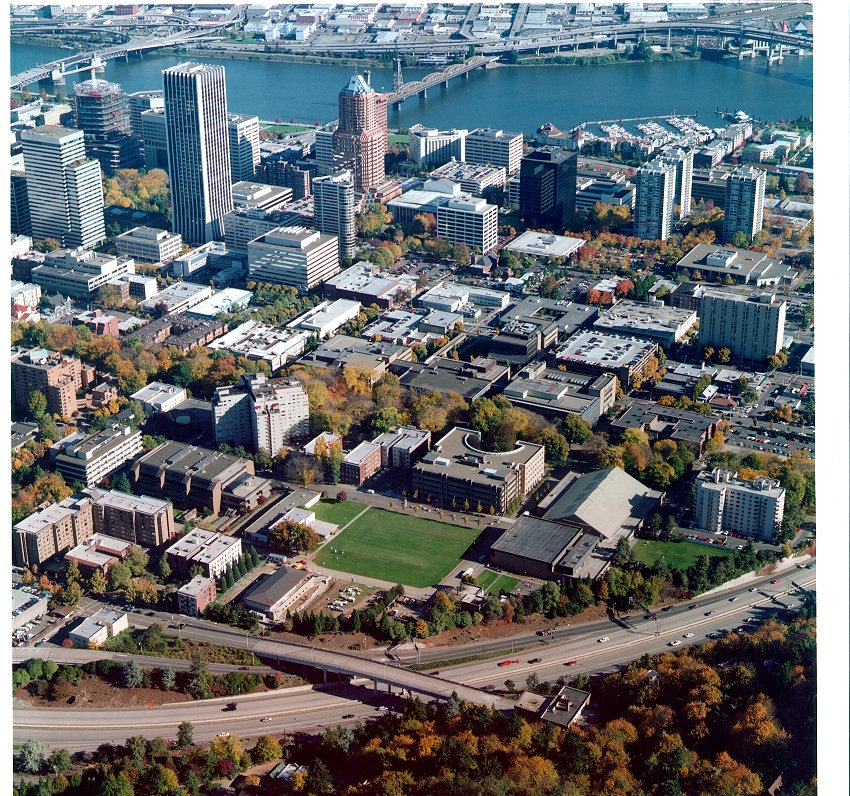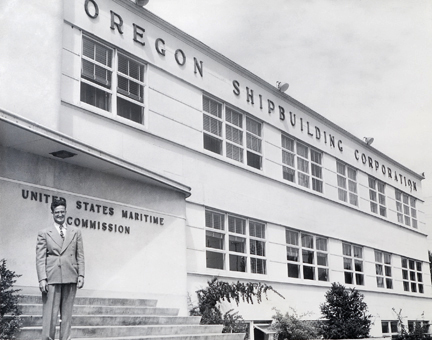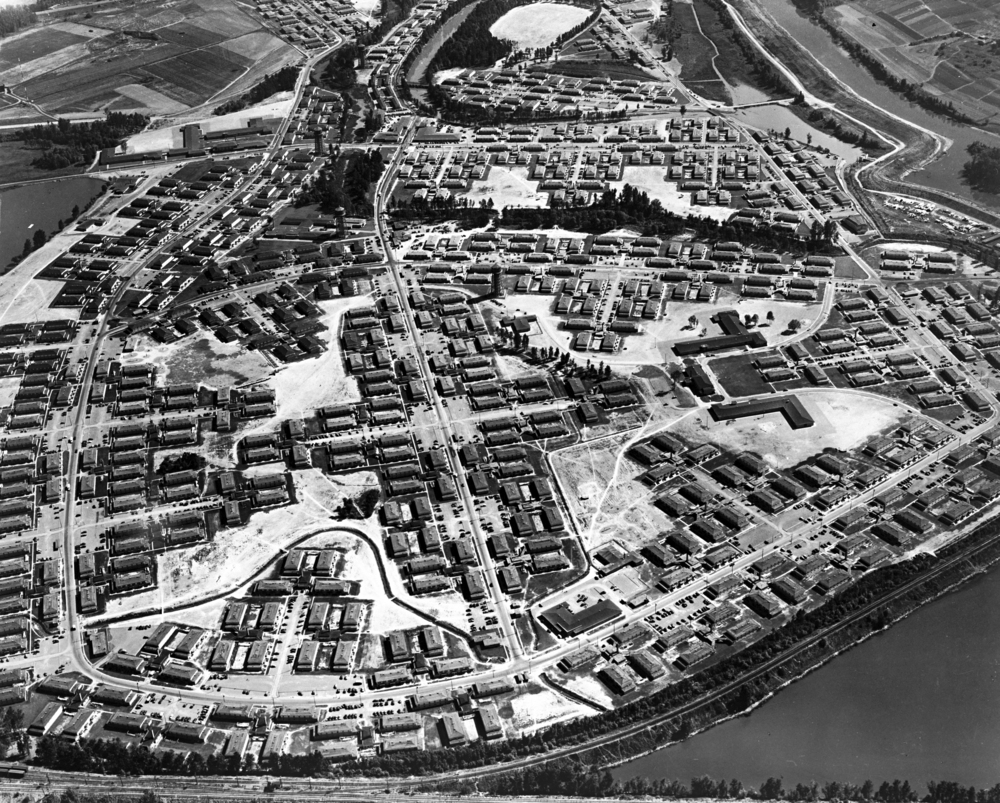The Vanport Extension Center grew from a converted shopping mall and recreation center in the World War II city of Vanport into Portland State University, the first publicly supported institution of higher learning in Portland.
In early 1946, Stephen E. Epler moved to Portland to take a job counseling returning veterans on their educational opportunities. Like many returning servicemen, Epler discovered that Portland housing was nearly impossible to obtain, and he decided to move to Vanport, where housing was inexpensive and abundant.
As an education counselor, Epler realized that few colleges had the housing and jobs needed for the flood of veterans who wanted to take advantage of the GI Bill. He proposed the Vanport Extension Center (VEC) as an emergency measure to take some of the burden off the state’s colleges. Rather than act as a junior college or vocational school, VEC’s initial purpose was to be a two-year "feeder" college for Oregon's professional and liberal arts schools. The center opened for classes in the summer of 1946.
Of the 220 students who enrolled that summer, 94 percent were veterans (it was not until the 1949-1950 school year that veteran enrollment fell below 50 percent). From the beginning, however, VEC was open to anyone interested in getting a college education, and the administration used advertising, promotion, and editorials to encourage the enrollment of women and minorities. In 1948, minorities made up only 2.6 percent of the student body: “14 Negro, 8 Chinese, 12 Japanese, 1 Indian.” While the enrollment of women grew by leaps, from 74 in 1946 to 283 in 1949, minority enrollment increased by only 10 students between 1948 and 1950.
The first VEC summer session in 1946 offered 13 classes in 8 disciplines taught by 24 instructors. Student majors included business administration, pre-law, pre-medicine, and liberal arts. By 1951-1952, 68 faculty members were teaching 316 classes in 43 subjects, and the school offered 29 majors.
VEC struggled against the established Oregon universities—University of Oregon and Oregon State University—to assert its continued relevance in the wake of decreasing veteran admissions. The destruction of Vanport and the school building in the May 30, 1948, Columbia River flood appeared to settle any arguments over its continuation. Nevertheless, VEC administrators, along with student and community supporters, persuaded the Oregon State Board of Education to allow it to continue.
On June 14, 1948, VEC reopened at Grant High School for the summer session. The school then relocated to the abandoned Oregon Shipbuilding Corporation building at St. Johns. On April 15, 1949—the result of community popularity, favorable press, and hard work by administrators and alumni—the Oregon legislature passed House Bill 213 to make VEC a permanent, two-year institution.
In 1952, VEC moved again to the old Lincoln High School and its permanent home in Portland’s Park Blocks. The name was changed to the Portland State Extension Center. In 1955, the center became Portland State College (PSC), a four-year school; and in 1968, with the approval of the institution’s first doctoral programs, PSC became Portland State University.
-
![]()
Stephen E. Epler (left) with Vanport students Don Newman and Irwin McFadden, May 1947.
Oreg. Hist. Soc. Research Library, OrHi 69464
-
![]()
Vanport Extension Center, 1946-1948, map.
Courtesy Portland State University Special Collections & University Archives -
![]()
The city of Vanport, with the Vanport Extension Center's Columbia Hall on the right.
Courtesy Portland State University Special Collections & University Archives -
![]()
Students at the Vanport Extension Center snack bar in the mid 1940s.
Courtesy Portland State University Special Collections & University Archives -
![]()
Vanport Extension Center footballers in about 1947.
Courtesy Portland State University Special Collections & University Archives -
![]()
Plan for the Vanport Extension Center.
Courtesy Portland State University Special Collections & University Archives -
![Vanport Extension Center building (former Oregon Shipbuilding Corporation administration building).]()
Vanport Ext Ctr, Oregon Ship site, admin bldg, 1948-1953.
Vanport Extension Center building (former Oregon Shipbuilding Corporation administration building). Courtesy Portland State University Special Collections & University Archives -
![]()
Stephen Epler at the new Vanport Extension Center, fall 1948.
Courtesy Portland State University Special Collections & University Archives -
![]()
Women's sweater, Vanport Extension Center, c.1940s.
Oregon Historical Society Museum Collection, 2023-30.1
Related Entries
-
![Portland State University]()
Portland State University
Located in downtown Portland, Portland State University is Oregon’s urb…
-
![Stephen E. Epler (1909-1997)]()
Stephen E. Epler (1909-1997)
Stephen E. Epler, the founder of the Vanport Extension Center&mdas…
-
![Vanport]()
Vanport
In its short history, from 1942 to 1948, Vanport was the nation’s large…
Related Historical Records
Map This on the Oregon History WayFinder
The Oregon History Wayfinder is an interactive map that identifies significant places, people, and events in Oregon history.
Further Reading
Dodds, Gordon. The College that Would not Die: The First Fifty Years of Portland State University, 1946-1996. Portland, Ore.: Oregon Historical Society Press, 2000.
Maben, Manly. Vanport. Portland: Oregon Historical Society Press, 1987.
From the University Archives: the Vanport Extension Center, 1946-48. Portland State University Library Digital Exhibits.

